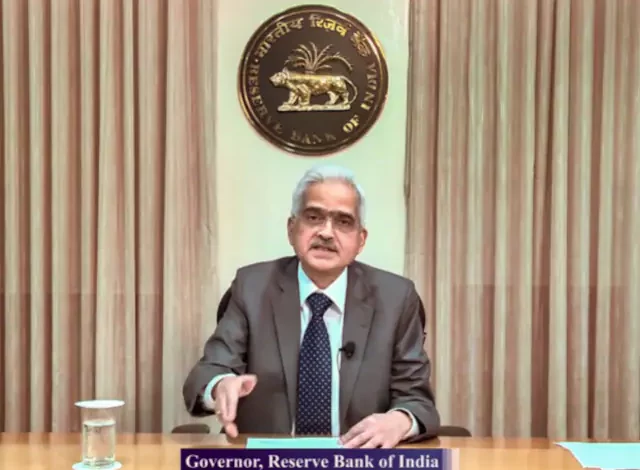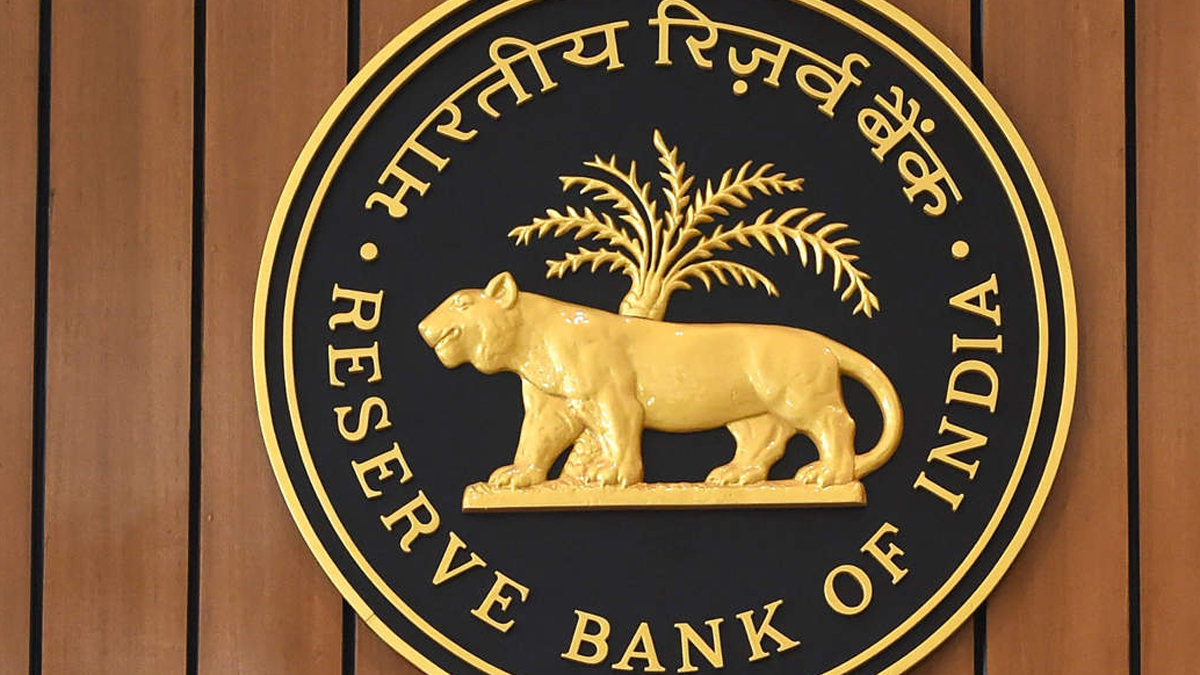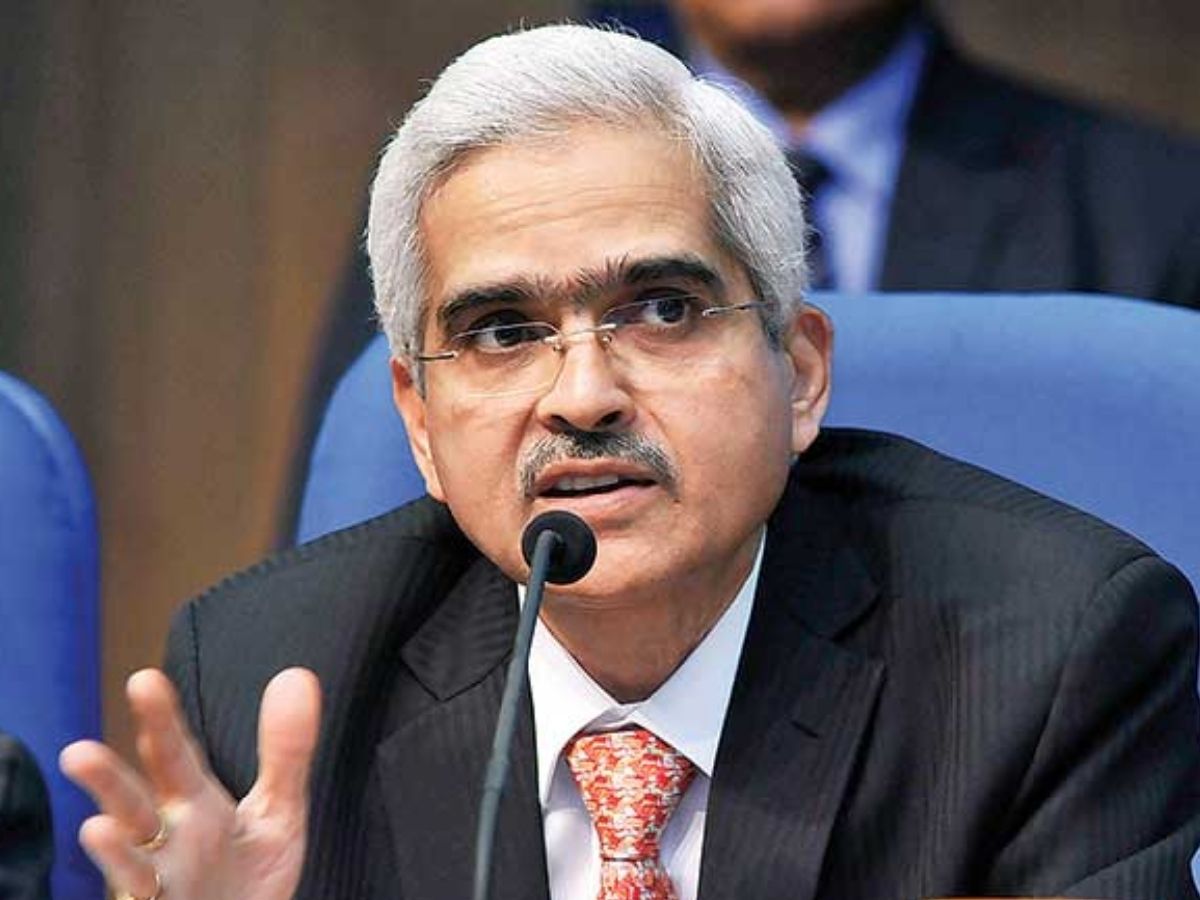MPC increases the repo rate by 50 basis points to 5.40 per cent and How would it impact the stock and bond markets?

MPC increases the repo rate by 50 basis points to 5.40 per cent, reversing Covid’s cutbacks.
The committee notes uncertainties over the inflation direction and maintains the FY23 CPI forecast at 6.7 per cent.
The Monetary Policy Committee (MPC) of the Reserve Bank of India (RBI) announced a 50 basis point increase in the repo rate to 5.40 per cent on Friday, citing persistent upside risks to inflation.
The current rates for the Standing Deposit Facility (SDF) and the Marginal Standing Facility (MSF) are 5.15 per cent and 5.65 per cent, respectively. The SDF and MSF stand for the interest rate corridor’s lower and upper bands.
A “Business Standard” poll on Monday indicated that the repo rate would rise by 35 to 50 basis points during this week’s policy announcement.
Since August 2019, the benchmark policy repo rate is now at its highest.
The MPC stated this morning that the rate-setting panel was concentrating on the withdrawal of accommodation, much as it did in its policy statement from June. Some economists have asked for a change in stance to neutral or calibrated tightening, given the MPC’s policy-tightening trajectory.
With this most recent rate change, there have been 140 basis points more rate increases since May. Effective rate increases for 2022 are 180 basis points, considering the SDF’s launch in April at a rate higher than the reverse repo rate.
“Spillovers from geopolitical shocks are making the inflation trend very unclear. According to the MPC’s statement, food and metal prices have recently declined from their high.
“International crude oil prices have decreased recently, but they are still high and unstable due to supply concerns, even if the forecast for global demand is deteriorating. The US dollar’s gain may fuel pressures for import-based inflation.
Until June 2022, the Consumer Price Index (CPI) inflation rate hasn’t fallen below the upper limit of the RBI’s prescribed 2–6% range.
The inflation reading for June was 7.01 per cent. The medium-term CPI inflation objective set by the RBI is 4%.
Following Russia‘s invasion of Ukraine in late February, precipitating a rapid surge in global commodity prices, downside risks to domestic inflation significantly rose.
With risks evenly distributed, the RBI maintained its CPI inflation prediction of 6.7% for the current fiscal year. The CPI prediction implies that the Indian basket’s average crude oil price would be $105 per barrel.
CPI inflation is estimated to be 7.1% from July to September, 6.4% from October to December, and 5.8% from January to March. In the first quarter of 2023–2024, the price gauge is anticipated to be at 5%.
According to the RBI’s prediction, the MPC’s objective to ensure that average inflation does not sustain over the target band for more than three consecutive quarters may not be achieved. The RBI is required to inform the government if something goes wrong.
On Friday, the MPC kept its projection of 7.2% real GDP growth for the current fiscal year. GDP growth is anticipated to be 6.7% in the first quarter of the upcoming fiscal year.
After the policy announcement, bond prices dropped significantly, and the yield on the benchmark 10-year bond increased by ten basis points to 7.26%.
The bond market had hoped for a rate increase of 35 basis points and indications that the RBI could scale back future rate increases.
The rupee increased significantly against the US dollar and was last trading at 79.07 per dollar as opposed to 79.47 per dollar at Thursday’s previous closing.
“Aggressive” Position Taken By RBI On Inflation; More Rate Increases Anticipated: Report

To curb persistently rising inflation and support the rupee, the central bank increased the benchmark interest rate by 50 basis points on Friday. This is the third straight increase since May.
Mumbai: According to experts, the Reserve Bank has taken a tough stance against inflation and may increase the benchmark interest rate again shortly.
To curb persistently rising inflation and support the rupee, the central bank increased the benchmark interest rate by 50 basis points on Friday. This is the third straight increase since May.
The repurchase (repo) rate was increased by 50 basis points to return the interest rate to its pre-pandemic level.
The last time it was 5.40 per cent was in August 2019. “Even though there has been no change in the inflation or growth estimates, the RBI has obviously adopted a strong stance against inflation. It has a compelling case for taking on inflation head-on given its confidence in growth, “said Bank of Baroda Chief Economist Madan Sabnavis.
Given that the inflation rate will remain above 6% for the next two quarters, there may be another 50 bps increase during the year.
The central bank estimates retail inflation to be 6.7% annually.
Based on the consumer price index (CPI), inflation is anticipated to be 7.1% in the second quarter of the current fiscal year and 6.4% from October to December.
According to Abheek Barua, chief economist at HDFC Bank, the RBI made a textbook policy pronouncement today that is proactive and frontloaded in response to inflation that is still high. At the same time, the growth trend is still largely favourable.
He also anticipates that the RBI will keep raising rates in the following policies, bringing the interest rate to 5.75 per cent by the end of the year.
According to Barua, “the bond market rally seen over the last few days is likely to reverse, and we expect the 10-year paper to trade closer to 7.3-7.4% by the end of the quarter as markets reprice in RBI action and the supply of both SDLs (state development loans) and central government bonds this year.”
The markets had generally priced in 50 basis point increases in the repo rate, according to Rajni Thakur, Chief Economist at RBL Bank, and any forward direction would have been more important than the rate move itself.
Even though the rate of increase is likely to slow down in the coming months, she shared the opinion that given the growth-inflation forecast, additional increases to the 6-per cent terminal repo rate seem inevitable.
According to Thakur, continued “emphasis on withdrawal” suggests continued depletion of excess liquidity, which means that monetary tightening is still far from complete.
While announcing the credit policy, RBI Governor Shaktikanta Das stated that the monetary policy should maintain its withdrawal of accommodation to guarantee that inflation advances toward the target of 4% over the medium term while promoting growth. According to Dhruv Agarwala, Group CEO of Housing.com, the increased repo rate will ultimately affect the cost of borrowing for Indian homeowners.
It is also essential to keep in mind that previous rate increases and the ensuing rise in home loan rates haven’t yet had a visible detrimental effect on the soaring demand for homes, he said.
He continued with a positive buyer mood and renewed investor interest in residential real estate, “we believe, will attenuate some of the negative effects of the rate hike.”
Additionally, Das did not mention a potential shift in policy or postponement of the upcoming procedure, which is anticipated in late September.
According to V Swaminathan, Executive Chairman of Andromeda Loans and Apnapaisa, the RBI’s lending rate calibration could indicate a decline in the number of borrowers looking for home loans because both new and existing home loans EMIs are expected to rise, encouraging new homebuyers to adopt a wait-and-see attitude.
Sandeep Bagla, CEO of Trust Mutual Fund, claimed that despite vigorous price hikes and time, significant and persistent inflationary impulses remain in rising commodity prices and wage pressures.
According to Bagla, rate increases could be spaced out not to affect the performance of debt funds.
The policy statement is on standard terms, indicating the RBI’s continuous commitment to maintaining a balance between stability and growth, according to Rohit Arora, CEO and Co-Founder of Biz2Credit & Biz2X.
He continued, “But with this action, the easy money era will end, and things will return to how they were before COVID.
The MPC delivered a frontloaded 50 bps rate increase compared to market forecasts of 35–40 bps, according to Sampath Reddy, CIO, Bajaj Allianz Life Insurance, who said the RBI policy was hawkish.
“Bond rates have gotten harder as a result of today’s hawkish policies, and we anticipate that they will stay high in the foreseeable future. The future course of action taken by RBI would continue to be informed by data and affected by external variables, “added he.
The system needs to be cleared of a significant amount of surplus liquidity, according to Suman Bannerjee, CIO at Hedonova.
“The RBI’s target has always remained below 6%, but inflation is currently at 7.1%, and I anticipate additional measures in the coming months,” added Bannerjee.
The Monetary Policy Committee, which sets interest rates for the Reserve Bank, will meet again from September 28 to 30, 2022.
How would the RBI rate hike impact the stock and bond markets?

Following the Reserve Bank of India’s increase in the repo rate to pre-covid levels, Indian stock markets increased, the currency gained strength, and bond yields increased. Governor Shaktikanta Das of the Reserve Bank of India (RBI) increased the benchmark policy repo rate by 50 basis points despite his continued optimism for domestic development. Despite numerous uncertainty on the international front, he claimed that the domestic economic recovery is becoming more broadly based.
The Nifty Bank index was up 1% and maintained over 38,000. The highest since August 2019, according to Axis Securities Chief Investment Officer Naveen Kulkarni, repo rates have returned to levels seen before the pandemic. Since the RBI began removing excess money, system liquidity has tightened, and system credit growth has improved to 14%. With credit growth starting to pick up, we think the banks with a more significant percentage of floating rates and a solid CASA-led deposit franchise should be well-positioned in this context of rising interest rates. While domestic inflationary pressures appear to be progressively subsiding, geopolitical unrest, market volatility, and the potential for a global recession remain significant threats.
Currency exchanges
In comparison to yesterday’s close of 79.47, the Indian rupee increased today to 79.23 per US dollar. The overall tone of the policy was a little hawkish than anticipated. Inflationary pressures will probably be contained by further, calibrated tightening of monetary policy. The ability of Primary Dealers to function as market makers in forex markets was a significant regulatory development. The action aims to increase market participation, according to IFA Global Research Academy.
When announcing the monetary policy, RBI Governor Shaktikanta Das stated that the central bank is vigilant and committed to preserving the stability of the Indian rupee. The US dollar index (DXY) has increased 8.0% against a basket of major currencies this fiscal year (August 4). The Indian Rupee has performed significantly better than many reserve currencies, as well as many of its EME and Asian peers, in this environment, declining by 4.7% against the US dollar during the same period. More so than a lack of strength in the macroeconomic fundamentals of the Indian economy, the strengthening of the US dollar is to blame for the depreciation of the Indian rupee.
The official said that the RBI’s market actions have contributed to keeping volatility under control and ensuring the rupee’s smooth movement.
The bond market
After the central bank increased its benchmark policy rate by 50 basis points to manage rising inflation, Indian government bond yields increased today. The RBI also maintained its outlook for both inflation and GDP growth. The 10-year bond yield increased from 7.1073 per cent earlier in the day to 7.2588 per cent today. The MPC maintained its 7.2 per cent GDP growth forecast for 2022–2023 while maintaining a 6.7 per cent inflation outlook.
Although the RBI did not raise its inflation prediction, analysts claim that the tone was shifting in favour of the hawks.
“MPC today unanimously voted to maintain the policy stance of “removal of accommodation” and raise Policy Repo Rate by 50 bps. The MPC maintained its FY23 GDP growth prediction at 7.2 per cent while finding solace in the broad-based domestic development impulses. Although global commodity prices have recently moderated, the MPC has maintained its FY23 inflation prediction at 6.7 per cent. Given the context of the worldwide recession and its associated disinflationary effects, we predict that policy rates in India will peak at just around 6 per cent this year. Further rate actions will be more calibrated and data-dependent as a result.
According to Churchill Bhatt, Executive Vice President, Debt Investments at Kotak Mahindra Life Insurance Company, the yield on the benchmark 10-year Government Bond is anticipated to continue in the 7.10–7.40 range shortly.
After the RBI raised the repo rate, are FD rates expected to reach 8%?

The RBI increased the repo rate by 0.50 per cent again during the monetary policy meeting conducted on August 5, 2022, continuing the rate hike cycle that began in May 2022. The overall increase in the repo rate over 93 days is currently 1.4 per cent (40+50+50 = 140bps). Rising FD interest rates have gained additional traction due to three consecutive repo rate increases. Undoubtedly, the era of historically low FD rates is over, and FD investors may look forward to brighter times in the future.
By increasing the FD interest rate by 50 basis points from 6.5 per cent to 7 per cent, you will receive an extra 3,436 rupees in interest on each Rs 1 lakh FD held for five years.
Will the FD interest rate cross the 8% threshold?
The psychological benchmark for FD interest rates is 8% since many FD investors regard any return above 8% as respectable. What are the chances deposit rates will eventually hit the 8 per cent threshold?
Depending on how long this rate hiking cycle lasts, there is a chance that FD rates will reach 8%.
Even though the repo rate increased significantly by 1.4 per cent in 93 days and the RBI has hinted at ending its accommodative policy, many analysts believe there is still room for a 50-100 bps increase in the next three to four quarters.
“While some early signs of inflation moderation are evident, we believe that external sector risks continue to be numerous and that the RBI should increase the frontload rate even though the total terminal rate may not be very high. By the end of 2022, we anticipate an 85 bps increase in the repo rate to 5.75 per cent, according to Kotak Mahindra Bank Chief Economist Upasna Bhardwaj.
The 10-year G-sec yield peaked at 7.475 per cent on July 11, 2022, and is a solid indicator of long-term interest rates. The rising creation suggests that future interest rates will increase. “The cycle of rate hikes is still ongoing, so we should prepare for further rate increases in the north. The accommodative attitude has been maintained in withdrawal. We interpret this as a “no dovish” undertone policy, in contrast to the market’s expectations. Bond markets would now concentrate on increased G-sec supply and follow future cues from global bond yields. Investment strategy using fixed income stays in stages,” Lakshmi Iyer is the Kotak Mahindra Asset Management Company’s Chief Investment Officer (Debt) and Head of Products.

The rupee’s decline against the dollar has also been problematic and could contribute to increased interest rates. “The RBI’s case about the size of rate increases is made a little more difficult by currency considerations, and I believe India will need to move in the same direction as other central banks across the world while also taking appropriate action for our own economy. I anticipate the terminal repo rate to be in the range of 6 percent to 6.25 percent for the time being, with a longish period of stability “Akhil Mittal, Senior Fund Manager, Tata Mutual Fund, says that ause after that.
Compared to the repo rate, which was 4 per cent, the highest FD rate given by conservative banks like SBI had a spread of 1.5 per cent and was 5.5 per cent on a 5-year term. The bank may increase the FD rate for regular citizens to 7.75 per cent if it keeps the same spread and the repo rate reaches 6.25 per cent in the upcoming months. Accordingly, the rate for senior citizens might increase to 8.25 per cent, and if the bank keeps offering older adults special rate FDs with an 80 bps higher rate, they could receive a rate of 8.55 per cent.
Smaller banks will raise their interest rates sooner than larger ones.
Many reputable smaller banks have begun offering FD rates of 6.5 per cent to regular residents and 7 per cent or higher to senior citizens. For instance, IDFC First Bank, IndusInd Bank, and Yes Bank offer elderly persons a return of at least 7%, whereas the best rate available to the general public is 6.5 per cent.
RBL Bank offers the highest rate, 6.65 per cent, while Deutsche Bank offers the highest rate for regular people, 7 per cent.
The Covid-19 pandemic-related liquidity influx by numerous countries and the hyperinflation brought on by the Russia-Ukraine war make the current scenario exceptional in many respects. Therefore, FD interest rates may reach the 8 per cent barrier soon.
It is not out of the question to anticipate that the interest rate will approach 8% within 1-2 years, given the speed of the rate hike.
Slower adoption of rate increases in FDs
When policy rates start to rise, lending rates transmit rates more quickly, while FD rates transmit rates more slowly. The increase in the deposit interest rate was less than the 0.90 per cent increase in the repo rate.
When banks give depositors the advantage of a rate increase, there is typically a lag. Larger banks will gradually hike rates, even though several smaller banks have already done so. The fact that larger banks already have enough liquidity and there isn’t much rivalry for deposits is the cause of the delayed transmission of the deposit rate increase.
However, if the RBI continues to raise rates in the future progressively, banks will be forced to increase their deposit interest rates as well. Therefore, FD investors should be aware that it can take some time for depositors to profit from the RBI’s sequence of rate hikes fully.
After recent hikes, should you make long-term investments?

Although a rate increase is good news for depositors, it also presents several challenges. Nobody knows where the rates will ultimately go or when they will peak, even though the direction of interest rates has reversed. If you wait longer to book your FD for a higher rate, you will lose out on the already increasing rates, and if you book long-term FDs after just a few hikes, you may lose out if the rates continue to rise in the future. We explain how the interest rate is expected to change and how you can take advantage of the current situation to your advantage.
Should one wait until rates reach 8% before making a long-term FD purchase?
Therefore, it might not be the best moment to book an FD if you want to do so for a long time or if a significant FD needs to be renewed. It is preferable to purchase short-term fixed-rate deposits in a rising rate environment so that they might profit from the increase during the investment period. Therefore, choosing an FD for six months to a year could be a wiser move. You can book longer-term FDs once these FDs mature and you receive a better rate at the time of renewal.
edited and proofread by nikita sharma




